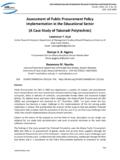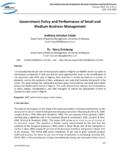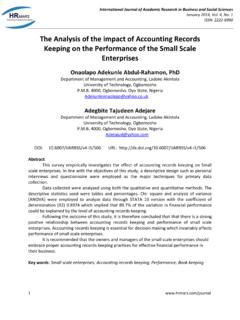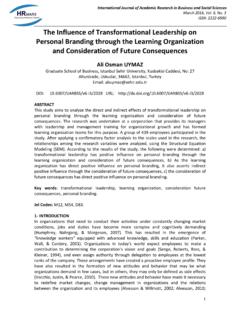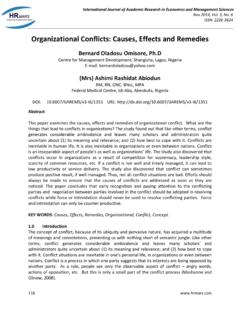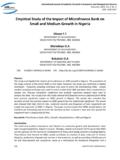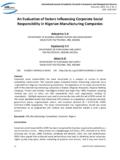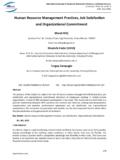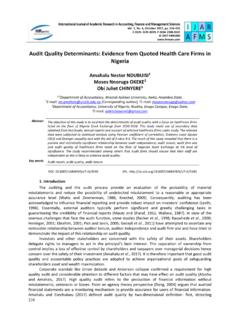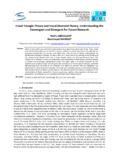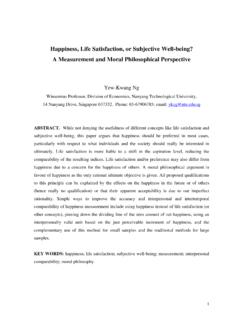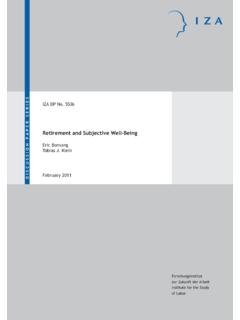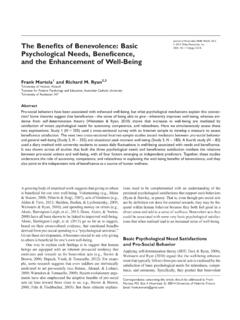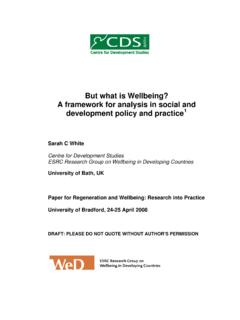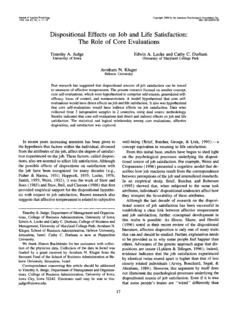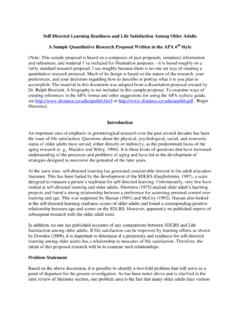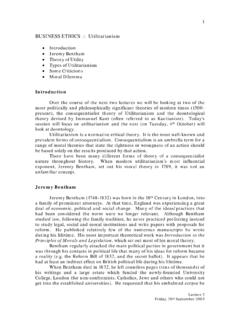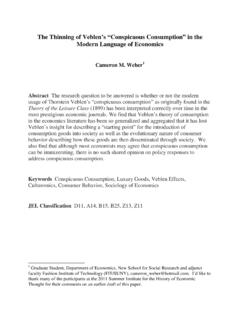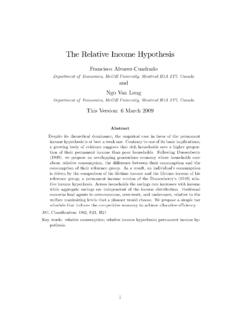Transcription of The Influence of Work-Family Conflict and Family-Work ...
1 The Influence of Work-Family Conflict and Family-Work Conflict on Well-Being: The Mediating Role of Coping Strategies Nurul Nadia Abd Aziz, Zaidatul Nadiah Abu Yazid, Nor Habibah Tarmuji, Mawarti Ashik Samsudin, Azeman Abd Majid To Link this Article: DOI: Received: 29 Mar 2018, Revised: 13 Apr 2018, Accepted: 18 April 2018. Published Online: 22 April 2018. In-Text Citation: (Aziz, Yazid, Tarmuji, Samsudin, & Majid, 2018). To Cite this Article: Aziz, N. N. A., Yazid, Z. N. A., Tarmuji, N. H., Samsudin, M. A., & Majid, A. A. (2018). The Influence of Work-Family Conflict and Family-Work Conflict on Well-Being: The Mediating Role of Coping Strategies. International Journal of Academic Research in Business and Social Sciences, 8(4), 259 275. Copyright: 2018 The Author(s). Published by Human Resource Management Academic Research Society ( ). This article is published under the Creative Commons Attribution (CC BY ) license. Anyone may reproduce, distribute, translate and create derivative works of this article (for both commercial and non-commercial purposes), subject to full attribution to the original publication and authors.
2 The full terms of this license may be seen at: Vol. 8, No. 4, April 2018, Pg. 259 - 275. JOURNAL HOMEPAGE. Full Terms & Conditions of access and use can be found at International Journal of Academic Research in Business and Social Sciences Vol. 8 , No. 4, April 2018, E-ISSN: 2 22 2 -6990 2018 HRMARS. The Influence of Work-Family Conflict and Family- Work Conflict on Well-Being: The Mediating Role of Coping Strategies Nurul Nadia Abd Aziz1*, Zaidatul Nadiah Abu Yazid2, Nor Habibah Tarmuji3, Mawarti Ashik Samsudin4, Azeman Abd Majid5. 1, 2 Faculty of Business Management, Universiti Teknologi MARA Pahang Raub Campus, Pahang, Malaysia 3 Faculty of Computer Science and Mathematics, Universiti Teknologi MARA Pahang Jengka Campus, Pahang, Malaysia 4, 5 Faculty of Business Management, Universiti Teknologi MARA Pahang Jengka Campus, Pahang, Malaysia Abstract This research was conducted to gain an overview of the effects of Work-Family Conflict , family- work Conflict and coping strategies on the well-being of selected female respondents among the academic staff at University Teknologi MARA.
3 They represent a group of highly educated respondents with heavy workloads who are expected to be able to manage and balance their well-being. This study also aims to determine the mediating effects of coping strategies in the relationships between Work-Family Conflict , Family-Work Conflict and women's well-being with the use of the self-determination theory as an underpinning theory. The data was collected from 140 respondents using systematic sampling and subsequently analysed using SEM-AMOS This study was carried out to test the confirmatory model of Work-Family balance and coping strategies in the prediction of the well-being of women. It will be a beneficial guide and a contribution to existing knowledge in the field of human resource management when presented to academicians in public institutions of higher education. Keywords: Coping Strategies, Family-Work Conflict , Married Working Women, Well-Being, Work- Family Conflict .
4 Introduction The issue of Work-Family balance and women's well-being has continued to attract research attention worldwide. The well-being of working women is of increasing concern, as labor force participation among women continues to rise. Women attained global well-being when they demanded work, jobs and careers that have potential for development (Campione, 260. International Journal of Academic Research in Business and Social Sciences Vol. 8 , No. 4, April 2018, E-ISSN: 2 22 2 -6990 2018 HRMARS. 2008). Furthermore, being strongly involved in their jobs enhances women's well being (Sahu &. Rath, 2003). The nature of the job and the working conditions of that women have also contribute to their psychological well being. Towards the 21st century, the traditional family structure of the husband as the primary breadwinner and the wife as the homemaker has become less common as the number of women entering the labour force has increased.
5 The erosion of the boundaries between work and family roles is brought about by structural changes within the organisations. The problem of integrating work and family became a social phenomenon when the conflicts resulted in unfavourable consequences affecting families, employers and employees (Parasuraman & Greenhaus, 1997). For married working women, irrespective of the sector they are in, the age group they belong to, the number of children they have and their spouse's profession, it is very difficult to balance their work and personal lives (Delina & Raya, 2013). Nowadays, modernising trends such as the existence of the mobile phone application WhatsApp, with its whatsapp group feature, adds more Conflict between work and family roles for working women. However, it is not clear how Work-Family Conflict (hereinafter WFC), and Family-Work Conflict (hereinafter FWC) may affect these women's well-being. In particular, it is not clear whether these effects' are directly or indirectly mediated through other variables.
6 The objective of this study is to examine the relationship between WFC/FWC and well- being among married working women. Although there is an accepted level of evidence indicating that WFC has a major Influence in women's well-being, research done by O'Driscoll, Brough, and Kalliath (2004), however, found that neither WFC nor FWC produced any longitudinal effects. In other words, both variables failed to Influence well-being over time. In understanding women's well-being, this study is underpinned by the self- determination theory which is based on the concept that an individual who has the motivation to balance their lives will find a way to overcome the Conflict between work and family. This study intends to use the self-determination theory as a framework to explore the effects of coping strategies as an important intervening variable between WFC/FWC and women's well-being. Therefore, this study also aims to examine the effects of coping strategies as a mediator variable between WFC/FWC and women's well-being.
7 Although previous research has found that WFC may act as a mediator between work and family related variables and individual well-being (Noor, 2010), studies investigating the mediator impact of coping strategies on the relationship between WFC/FWC and well-being have never been carried out. Therefore, the second objective of this study was to address this gap by investigating the role played by coping strategies as a mediator to the relationship between WFC/FWC and women's well-being. An Overview of Previous Studies, Theoretical Discussion and Hypotheses Development Well-being is a multi-dimensional phenomenon (Stiglitz, Sen, & Fitttousi, 2009) and from a hedonistic approach, well-being can be defined in terms of pleasure attainment and a focus on happiness (Ryan & Deci, 2001). The hedonic approach relates to subjective well-being in terms of satisfaction (Diener, Suh, Lucas, & Smith, 1999). In addition to that, it is also known as the psychological well-being as it describes the quality of life of a person (Srimathi & Kiran Kumar, 2010).
8 A very happy person with a high level of satisfaction with life has a high level of subjective well-being (Albuquerque, Pedroso, Figueiredo, & Matos, 2012). The well-being of employees has 261. International Journal of Academic Research in Business and Social Sciences Vol. 8 , No. 4, April 2018, E-ISSN: 2 22 2 -6990 2018 HRMARS. important implications to the individual, the organization and also society since happiness makes people more productive (Oswald, Proto, & Daniel, 2015). One of the factors that may Influence well-being are WFC and FWC. These terms refer to the Conflict between these domains when engaging in one role is more difficult because of the involvement in other role. Therefore, the amount of time and psychological resources an individual decides to commit to both domains will result in a balanced life (King, 2005). WFC is defined as a form of inter-role Conflict in which the role pressures from work and family domains are mutually incompatible in some respect (Beutell & Greenhaus, 1982).
9 The WFC may increase, if the individual commits more time or psychological resources to work. Furthermore, when flexibility is minimal and the amount of control the person has over a job is limited, Conflict occurs (King, 2005). In addition to that, Malaysian women with families revealed that an internal locus of control was negatively related to WFC and FWC (Noor, 2010). Conflict generally has a negative impact on work-to-family outcomes (Wayne, Musisca, & Fleeson, 2004). According to researchers (Mesmer-Magnus & Viswesvaran, 2009), these outcomes are work domains, family domains and personal domains. Work domains including job burnout, poor job performance, intention-to- leave, and reduced organizational commitment (Netemeyer, Boles, & McMurrian, 1996). The stressors related to their work roles are more likely to increase feelings of WFC than FWC. (Mesmer-Magnus & Viswesvaran, 2009). The three work stressors that are related to WFC are work variability, quantity of workload and frequency of stressful events (Fox & Dwyer, 1999).
10 In contrast, FWC increases if an individual decides to commit more resources to family than work (King, 2005). Conflicts that relate to family-to-work are reduced satisfaction in marital and family relationships, family role performances and family involvement (Mesmer-Magnus &. Viswesvaran, 2009). Women experience FWC more than men (King, 2005). Stressors associated with family roles are more likely to cause feelings of FWC than WFC (Mesmer-Magnus &. Viswesvaran, 2009). The three family stressors that link to FWC are marital tension, lack of help from spouse, and lack of child care (Fox & Dwyer, 1999). On the basis of the above discussion on WFC and FWC, we postulate that: Hypothesis 1: WFC has a significant effect on well-being. Hypothesis 2: FWC has a significant effect on well-being. The self-determination theory assumes that humans are motivated by the degree of autonomy, or by their self-determination. Human's motivation itself can take many forms based on its autonomy, either it is controlled or not (Ryan & Deci, 2001).
